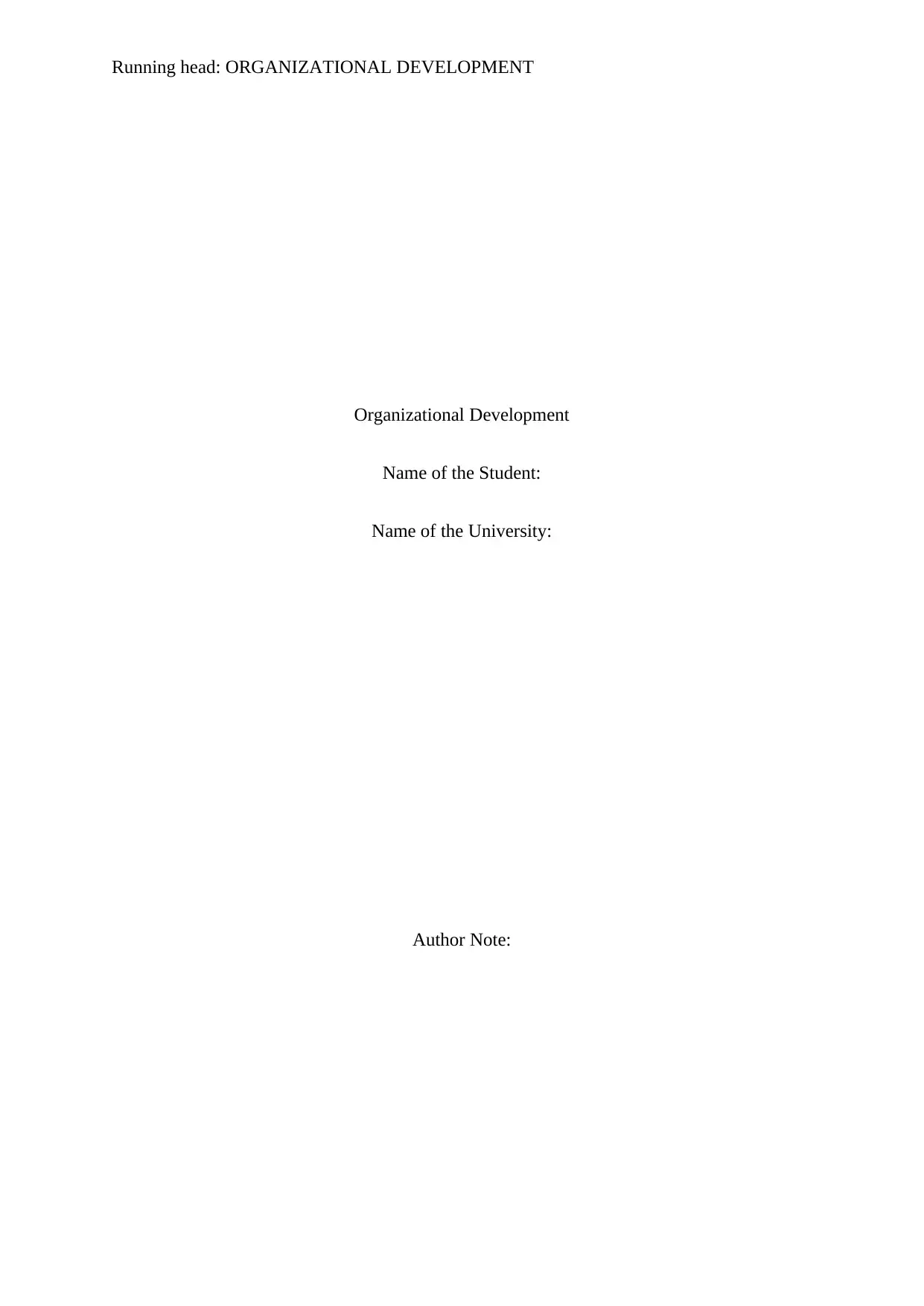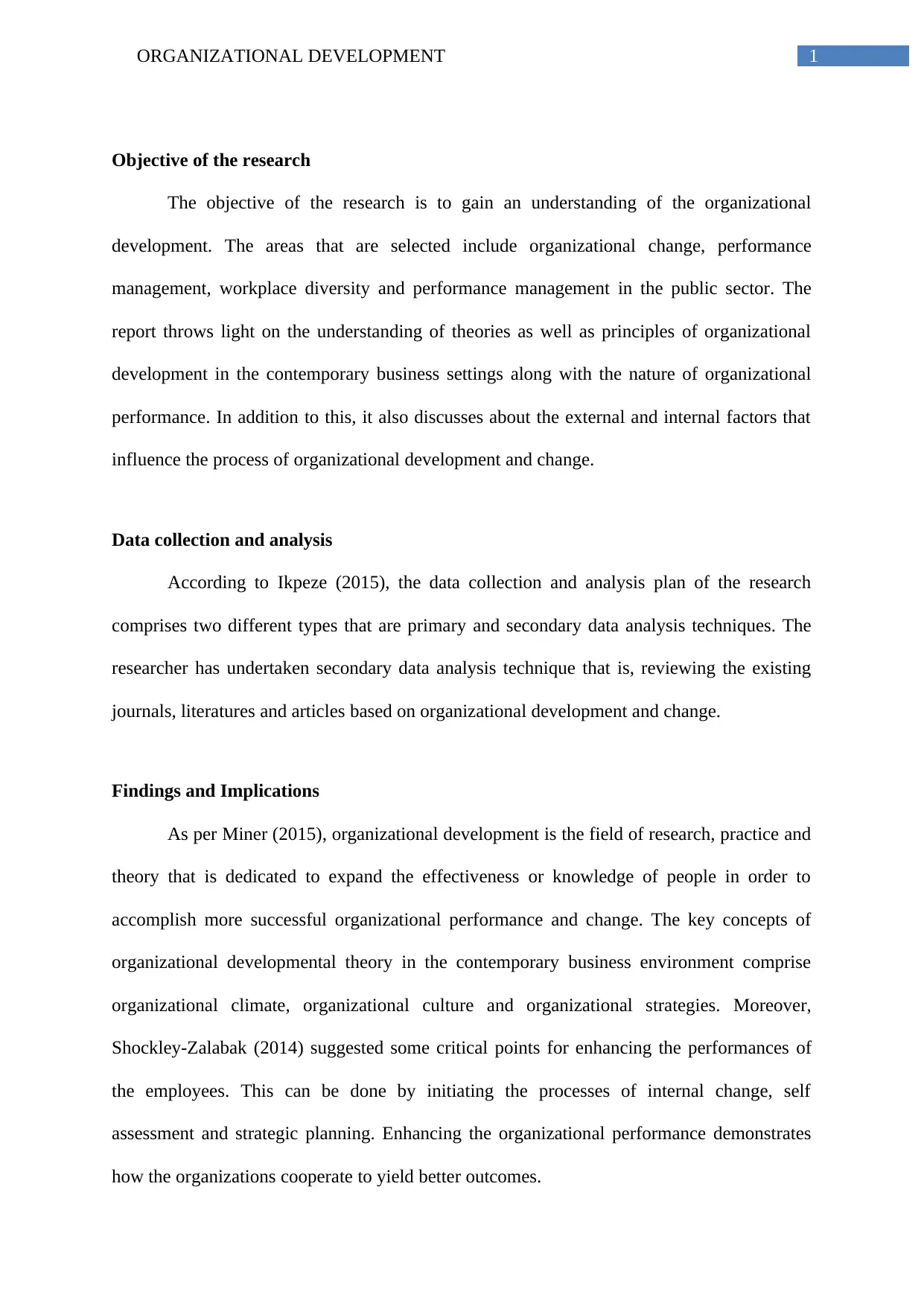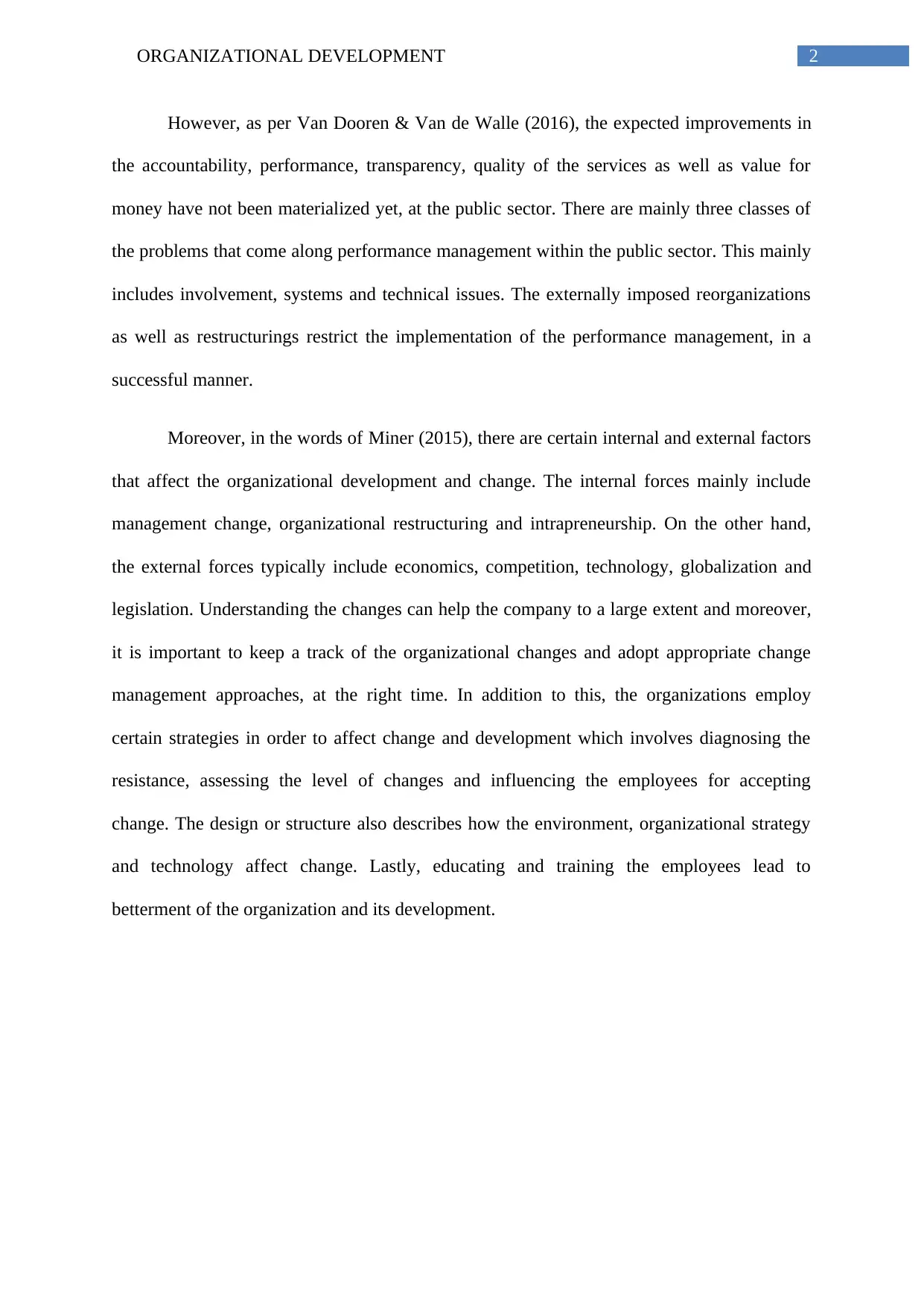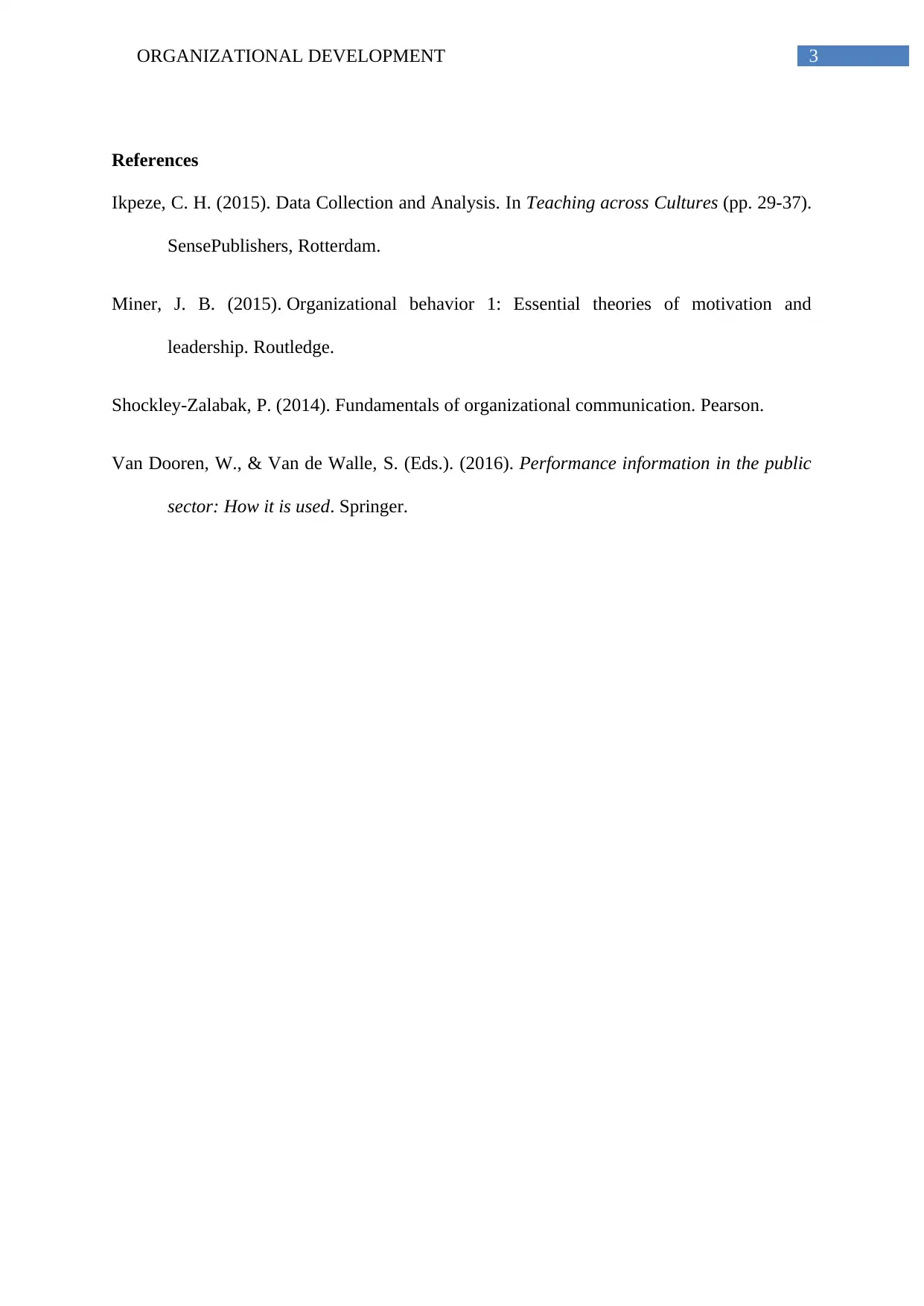Organizational Development Report: Analysis and Implications
VerifiedAdded on 2021/06/17
|4
|651
|111
Report
AI Summary
This report delves into the realm of organizational development, exploring key concepts such as organizational change, performance management, and workplace diversity within both the private and public sectors. The research analyzes the theories and practices of organizational development, emphasizing the impact of internal and external factors on organizational performance and change. It examines the importance of organizational climate, culture, and strategic planning, while also addressing challenges in performance management, particularly within the public sector. The report highlights the significance of change management approaches, including diagnosing resistance, assessing change levels, and influencing employee acceptance. Furthermore, it underscores the role of employee training and development in fostering organizational growth and improvement. The report uses the research of Ikpeze, Miner, Shockley-Zalabak, and Van Dooren & Van de Walle to support its findings.
1 out of 4











![[object Object]](/_next/static/media/star-bottom.7253800d.svg)